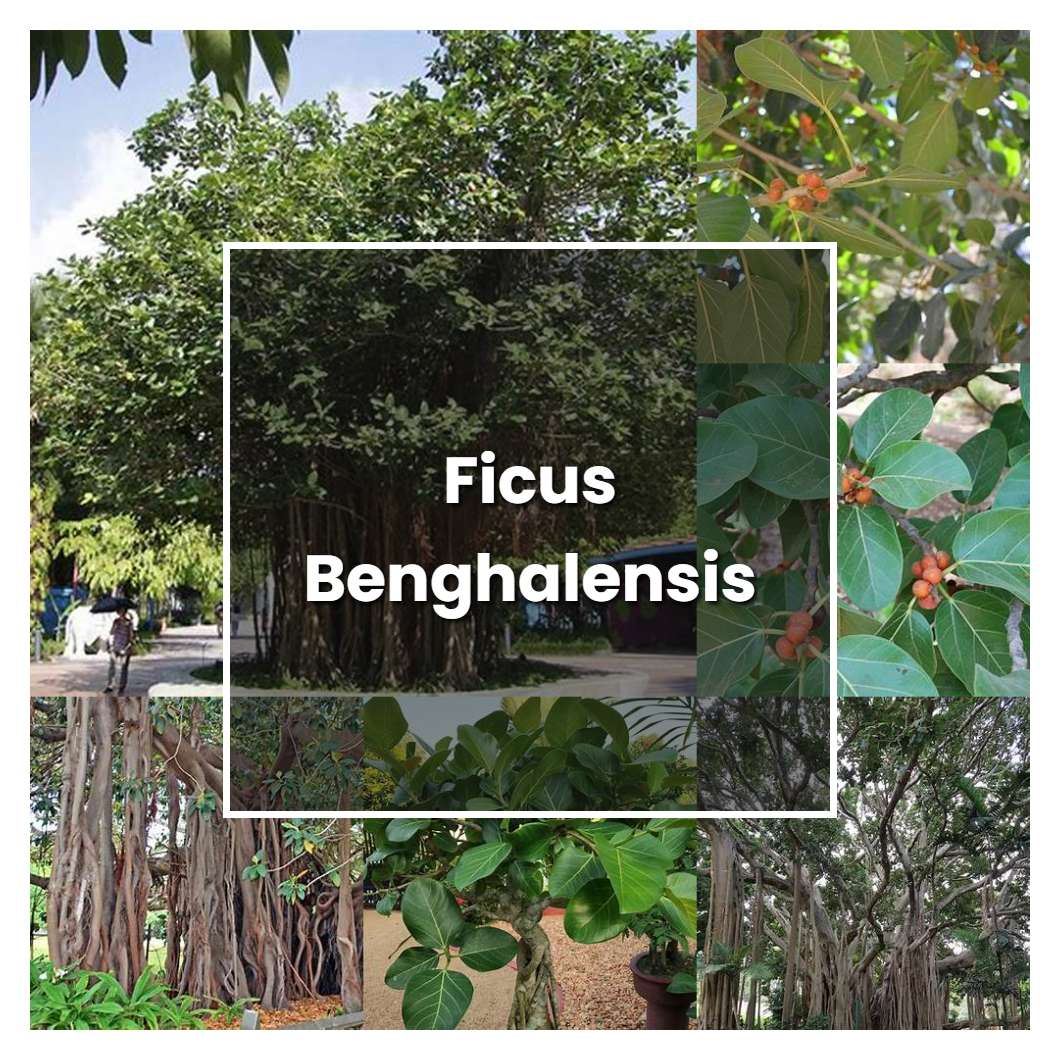Ficus benghalensis is a fast-growing tree that can reach a height of 30-40 m. It has a spreading crown with drooping branches. The leaves are simple, alternate, and ovate-shaped with a pointed tip. They are 10-20 cm long and 5-10 cm wide. The upper surface of the leaves is glossy green while the lower surface is paler. The leaf margins are entire. The tree produces small yellow flowers that are borne in clusters. The fruits are fleshy, green, and ovoid-shaped. They mature to a yellow or orange color and contain small seeds.

Related plant:
Ficus Variegata
Related plant:
Ficus Retusa
About soil condition, ficus benghalensis prefer well-drained, sandy soil with a pH of 6.0 to 7.5. They are not particular about soil type as long as it is not waterlogged. They are tolerant of short periods of drought but will not tolerate long periods without water.
Not too different with other trees, the ficus benghalensis needs sunlight to grow. However, it is not as demanding as some other species and can even tolerate shady conditions. The tree will just grow slower in these areas. When planting this tree, make sure it will have enough room to spread its branches as it matures.
The temperature condition that is most ideal for the growth of the Ficus benghalensis is between 68-74 degrees Fahrenheit. The plant does best in a humid environment and requires little to no water. The plant thrives in bright, indirect sunlight and can tolerate some shade.
Ideal humidity condition for this plant is around 50%. If the air is too dry, the leaves of Ficus benghalensis will start to drop. To increase the humidity, you can mist the plant or put it on a pebble tray.
For the fertilizer, this type of plant does best with a balanced fertilizer that is applied every two weeks during the growing season. If you want to use a organic fertilizer, compost or manure is best. As for the roots, they are aggressive and will quickly fill up a pot. Be sure to use a pot with plenty of space for the roots to spread.
Pruning is an important part of caring for your ficus benghalensis. Pruning helps to maintain the plant's shape and encourages new growth. It is also important to prune away any dead or dying leaves or branches. Dead leaves and branches can harbor diseases and pests that can harm your plant.
Propagation of the ficus benghalensis is best done by stem cuttings taken from new growth. The stem cuttings should be about 4-6 inches long and should be taken from the tips of the branches. The cuttings should be placed in a well-draining soil mix and kept moist until they have rooted. Once the cuttings have rooted, they can be transplanted into individual pots.
Usually, the plant growth rate during the day. The leaves are broad with a high surface-area-to-volume ratio that makes them ideal for rapid gas exchange, and the tree can lose large quantities of water through its leaves without suffering undue stress. This high water loss rate is also an advantage in hot, dry environments since it helps to keep the leaves cool and reduces the risk of dehydration.
Common problems for this kind of plant are stem and root rots, pests, and leaf spots. Stem and root rots can be caused by over watering or by planting the tree in poorly drained soil. Pests such as aphids, mealybugs, and scale can infest the tree and cause leaf drop. Leaf spots can be caused by a number of different fungi and can cause the leaves to turn yellow or brown and drop off.
Source:
Ficus benghalensis UF/IFAS Center for Aquatic and Invasive
Ficus bengalensis | Purdue University Famine Foods
Ficus benghalensis | Tropical Restoration Library
